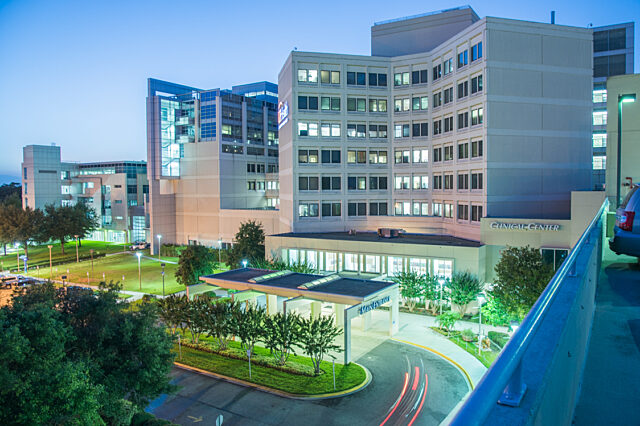North Florida’s first tomosynthesis machine provides peace of mind for UF&Shands patients

The mammograms every six months wore on Blair Trikardos.
The anxiety, the waiting, finding time to squeeze visits to the doctor between work and everything else - only to hear the same thing every time.
The doctor can feel the lump, there is something that shows up in the mammogram, but it's tough to see what it is, please come in every six months for the next two years so we can keep an eye on it.
Then there was the physical pain Trikardos felt when technicians tried to get the compressed images that would help doctors get a closer look inside her breast.
So she quit going.
But she knew she needed to go back. The lump in her breast wasn't just going to go away. Three years later, when Trikardos was 34, the Shands Jacksonville Breast Health Center had its brand new tomosynthesis machine - the only one in Northeast Florida.
Trikardos, a neonatal nurse at Shands, went in December and her exam was done with the 3D imaging that allows doctors to look at the breast in separate images just one millimeter apart.
This time, there was a conclusive result: You're fine, the nurse told her. Come back when you're 40. There was something about her having dense breast tissue which made it harder to read the earlier exams.
"The only words I really heard at that moment were that it was OK," Trikardos said. "That's what I needed to know."
And that's the beauty of tomosynthesis, said Martha C. Wasserman, M.D., chief of the women's imaging division at the Shands Jacksonville Breast Health Center.
The technology allows physicians to better diagnose problems and - just as important - to rule out tumors when they are not there, said Wasserman, an assistant professor of radiology at the University of Florida College of Medicine–Jacksonville.
Unlike a traditional 2D mammogram which takes digital images from two dimensions or views, 3D tomosynthesis takes multiple images from a camera located in an arm above the patient which sweeps from side to side during the exam. This additional imaging takes place in the same amount of time as a traditional mammogram, splicing together all the images like pages of a book, giving the radiologist a clearer view of all the layers in the breast.
Tomosynthesis is particularly effective for women with dense breast tissue which on a 2D mammogram could be difficult to distinguish out abnormalities over simply a build-up of natural tissue. This new imaging view not only rules out these abnormalities for the patient giving them piece of mind, but also significantly decreases the potential of call backs or additional mammograms saving the patient time and additional visits.
Patients are often expecting a high-tech looking machine, but the technology is in the camera.
"We've had patients say, 'When are you going to do that special mammogram?'" Wasserman said. "But it's already done."
Tomosynthesis can help avoid some of the compression images which may be painful for the patient.
With a traditional 2D mammogram, if doctors want to get a closer look at a particular part of the breast, they will do what is called a spot compression. That presses the breast more to spread it out and can be painful for women, Wasserman said. The tomosynthesis often eliminates many of the spot compression views, Wasserman said.
Every year, Lexus hosts the Champions for Charity Golf Tournament with the Research is the Answer (RITA) Foundation to benefit the Shands Jacksonville Breast Health Center. Shands used money raised from the tournaments to purchase the machine last year and started performing the 3D imaging on patients in August. About 5 to 10 mammograms are done daily on the machine - which is just being used for diagnostic exams, meaning a doctor saw or felt something that warranted a closer look. The goal is to eventually get more machines so all mammograms can be done on them, Wasserman said. And fewer women will experience the fear and uncertainty that Trikardos went through.
"When you have to go through something like that every six months for two years, the waiting, the not knowing …," Trikardos said, "… I just had to put it in God's hands."